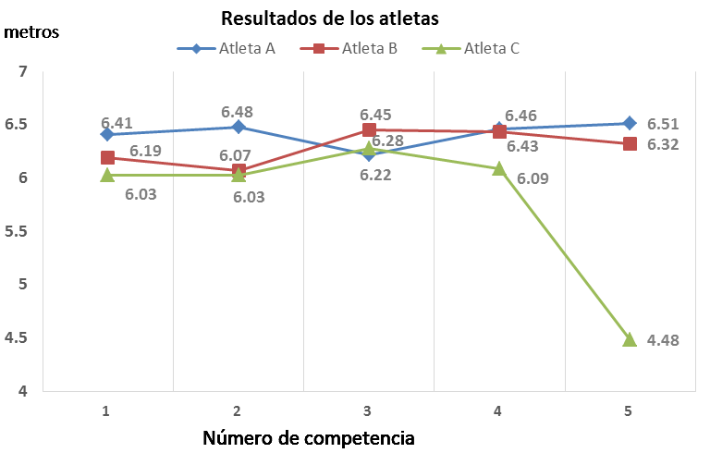Methodological procedure to determine the competitive performance dynamic of the Cuban track and field jumpers
Main Article Content
Abstract
This article is based on a research work which main objective is to elaborate a methodological procedure to analyze the behavior and the jumpers' results during the first Macrocycle of the school year 2017- 2018. Consequently, the efficiency of the competitive performance dynamic of the National Team was determined; The sample is composed by 30 athletes. There were used different theoretical methods such as: analytic- synthetic, and inductive-deductive. The empiric ones: the interview and the analysis of the documents. This study contributes to classify the conpetitive performance curve of the National team jumpers during the first Macrocicle of the school year 2017- 2018, according to the following tendencies: descending, upward field; upward, variable and of peak.
Downloads
Article Details

This work is licensed under a Creative Commons Attribution-NonCommercial 4.0 International License.
Those authors who have publications with this journal, accept the following terms of the license Attribution-NonCommercial 4.0 International (CC BY-NC 4.0):
You are free to:
Share — copy and redistribute the material in any medium or format
Adapt — remix, transform, and build upon the material
The licensor cannot revoke these freedoms as long as you follow the license terms.
Under the following terms:
Attribution — You must give appropriate credit, provide a link to the license, and indicate if changes were made. You may do so in any reasonable manner, but not in any way that suggests the licensor endorses you or your use.
NonCommercial — You may not use the material for commercial purposes.
No additional restrictions — You may not apply legal terms or technological measures that legally restrict others from doing anything the license permits.
Notices:
You do not have to comply with the license for elements of the material in the public domain or where your use is permitted by an applicable exception or limitation.
No warranties are given. The license may not give you all of the permissions necessary for your intended use. For example, other rights such as publicity, privacy, or moral rights may limit how you use the material.
References
Bompa, O.; Buzzichelli, C. (2015). Periodization training for sports, USA: Human Kinetics. ISBN: 9781492544814 (Ebook).
Colectivo de autores (2017). Actualizaciones en fisiología del ejercicio 2016 . Edit -Matrix.
Nápoles, E.L. (2000). El atleta cubano actual: rendimientos y marcas en la competencia fundamental (VII)consultado en http://www.deporcuba.com
Platonov, V. N. (2004).Sistema de preparación de los deportistas en el deporte olímpico, Kiev: Editorial Literatura Olímpica
Kiely, J. (2012). Periodization Paradigms in the 21 st Century Evidence - Led or Tradition-Driven, International journal of sports physiology and performance -September. ISSN: 1555-0273
Matveev, L P. (2001).Teoría General del entrenamiento deportivo. España: Ed. Paidotribo. Primera edición.
Muñiz, A. (2010). La forma deportiva y el éxito en las competencias fundamentales de la alta competición atlética, Año 15 N° 148, Sept de 2010 Buenos Aires. consultado en http://www.efdeportes.com/. ISSN: 1514-3465
Quintana, A. (2013). La actualización de la zona de resultados por edades en las disciplinas atléticas de carrera: una perspectiva para el control de la preparación deportiva a largo plazo. En Memorias del evento AFIDE. ISBN: 978-959-203-237-8
Vazel, P.J. (2019) Enseñanzas que el entrenamiento de jóvenes proporciona para el entrenamiento de alto nivel. 3er Congreso de entrenamiento de atletismo. Madrid: ENFA.

